Irish culture is vibrant, varied, and deeply rooted in the island’s history. It spans mythology, the Irish language, traditional music, art, literature, dance, and cuisine, shaped over centuries by influences from the Normans, Vikings, Scots, and English.
Although the culture in Ireland is often overshadowed by clichés and tired stereotypes, it’s a rich tapestry woven from centuries of tradition, history, and resilience.
Beyond the well-worn images of pints of Guinness and leprechauns lies a culture shaped by storytelling, creativity, and a deep connection to the land.
The traditions and influences that shape Irish culture

Photo left: The Tuatha Dé Danann as depicted in John Duncan’s Riders of the Sidhe (1911). Others: Shutterstock
From the haunting melodies of traditional music to the power of the Irish language, every aspect of Irish cultural traditions reflects a history of endurance and adaptation.
In this guide, I’ll explore the traditions, customs, and influences that make Ireland’s culture truly unique.
1. Storytelling
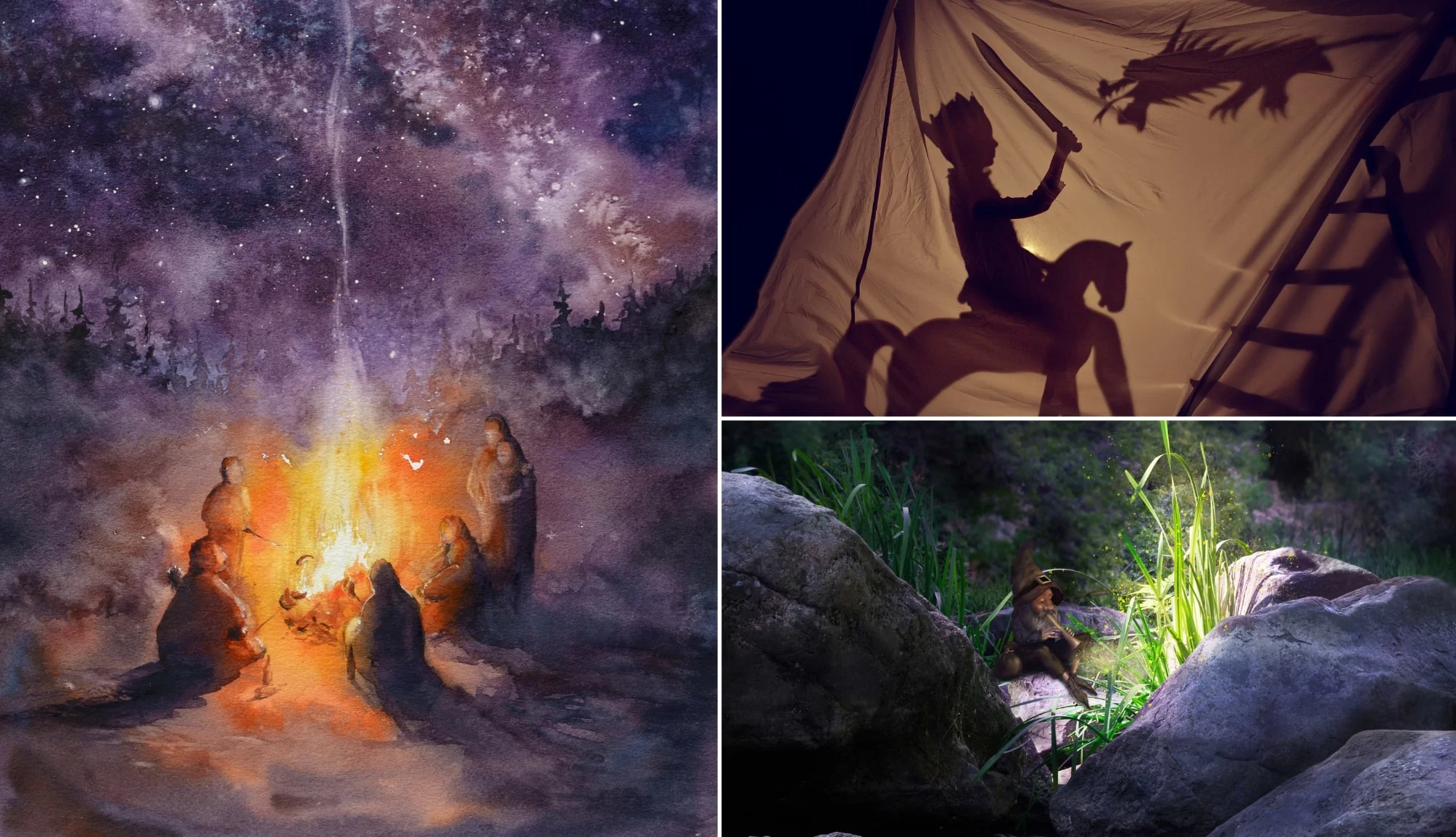
Photos via Shutterstock
Storytelling has been at the heart of culture in Ireland for thousands of years. Long before written records, the Celts preserved history, myths, and legends through spoken word—woven into poetry and song, passed down through generations.
This oral tradition gave rise to the rich worlds of Irish mythology and Irish folklore.
Ireland has produced countless masterful storytellers over the centuries, from Peig Sayers and Anna Nic an Luain to Éamon a Búrc and Seamus Heaney, each keeping the tradition alive in their own way.
2. Sport
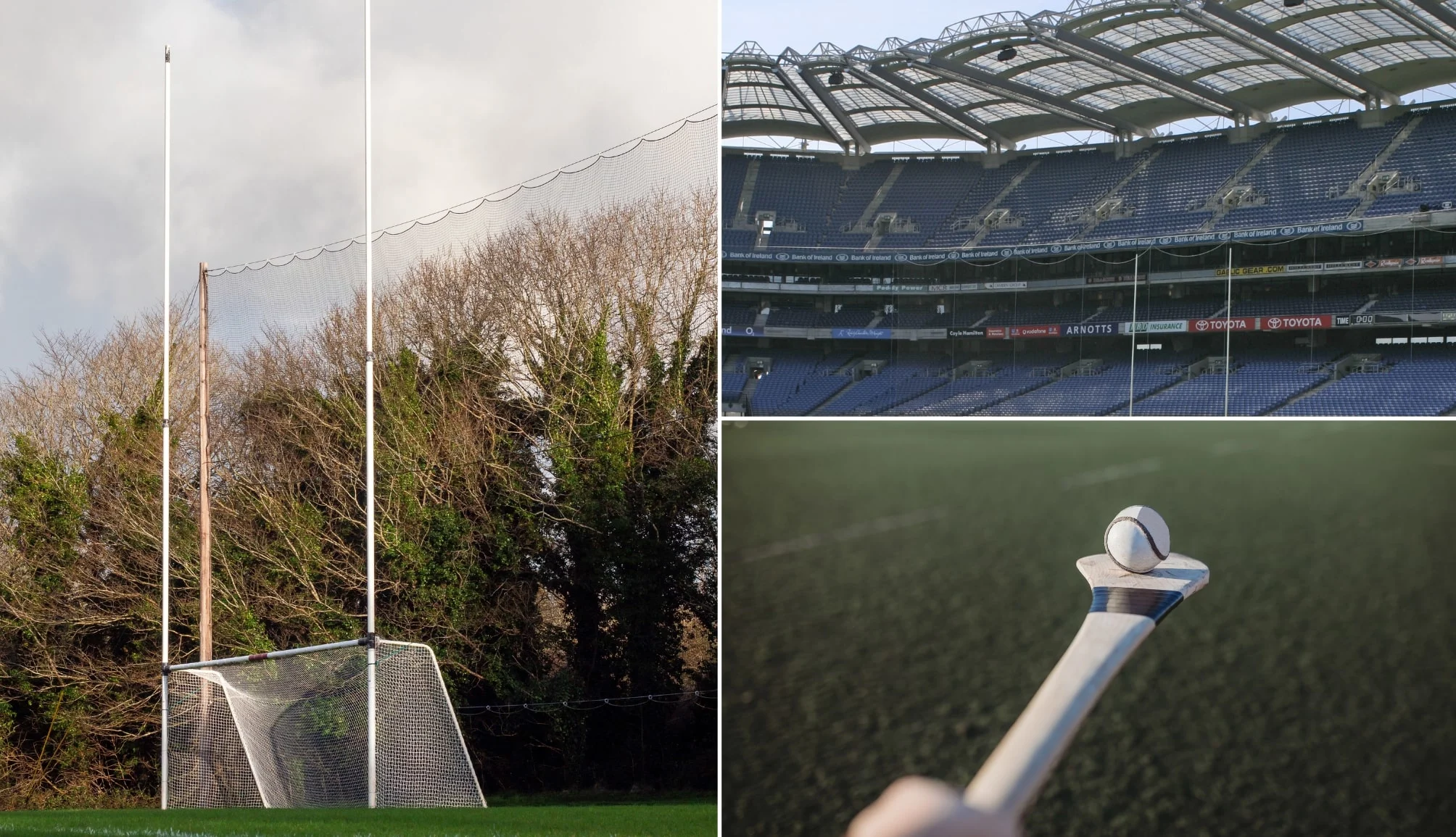
Photos via Shutterstock
Sport is a cornerstone of Irish culture and traditions, with Gaelic games drawing millions of spectators each year. These include Gaelic football, hurling, and camogie—fast-paced, fiercely competitive sports with deep historical roots.
Hurling, one of the world’s fastest field sports, has been played in Ireland for thousands of years (there’s an Irish fact for you!).
It’s a high-intensity game where two teams of 15 use wooden sticks called hurls to strike a small ball known as a sliotar.
The aim? Send the sliotar soaring over the crossbar for a point or past the goalkeeper for a goal.
3. Literature

Literature is woven into the fabric of Irish culture, and this little island has produced some of the greatest writers and poets of all time.
Jonathan Swift, one of Ireland’s earliest literary giants, gave the world Gulliver’s Travels, while Maria Edgeworth offered sharp insights into rural Irish life.
The eccentric and razor-witted Oscar Wilde left his mark with The Picture of Dorian Gray and The Importance of Being Earnest.
WB Yeats, Ireland’s first Nobel Laureate, won the prize in 1923, while James Joyce reshaped modern literature with Ulysses. Discover more Irish writers
4. Art
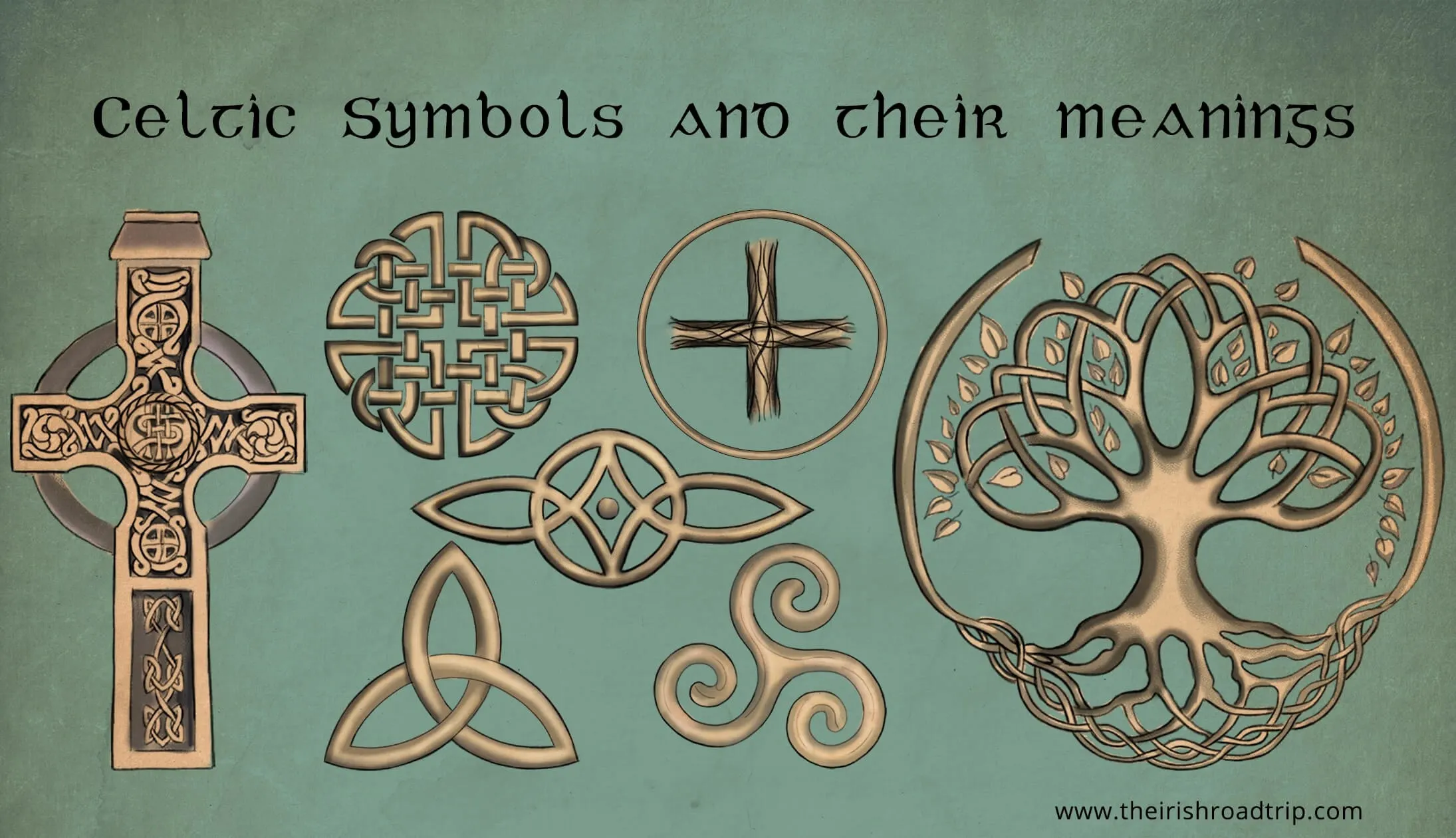
Many guides to Irish traditions and culture overlook art, which is a shame considering Ireland’s rich artistic heritage—especially its ancient masterpieces.
Art first appeared in Ireland around 3200 BC, with some of the earliest examples found at Newgrange in Meath, where Neolithic stone carvings still endure.
The iconic Celtic Cross, introduced by the Celts, became a defining symbol of Irish art, later evolving with the rise of Christianity into the intricate Insular style seen in monastic manuscripts like the Book of Kells.
Centuries later, institutions like the Royal Dublin Society and the Royal Irish Academy helped shape the culture in Ireland.
5. Irish Dancing

Irish dancing is a vibrant part of the culture of Ireland, though its popularity has waned in recent years.
Little is known about its origins before the 17th century, possibly due to Viking raids that destroyed early records.
The first documented mention dates back to 1413, when the Mayor of Waterford visited Baltimore, Cork, and noted that attendees “took to the floor.”
Closely tied to traditional Irish music, Irish dancing evolved over centuries, with step dancing becoming its most famous form. Its global recognition soared in the 1990s, thanks to Riverdance, which showcased the art form on an international stage.
6. Traditional Music
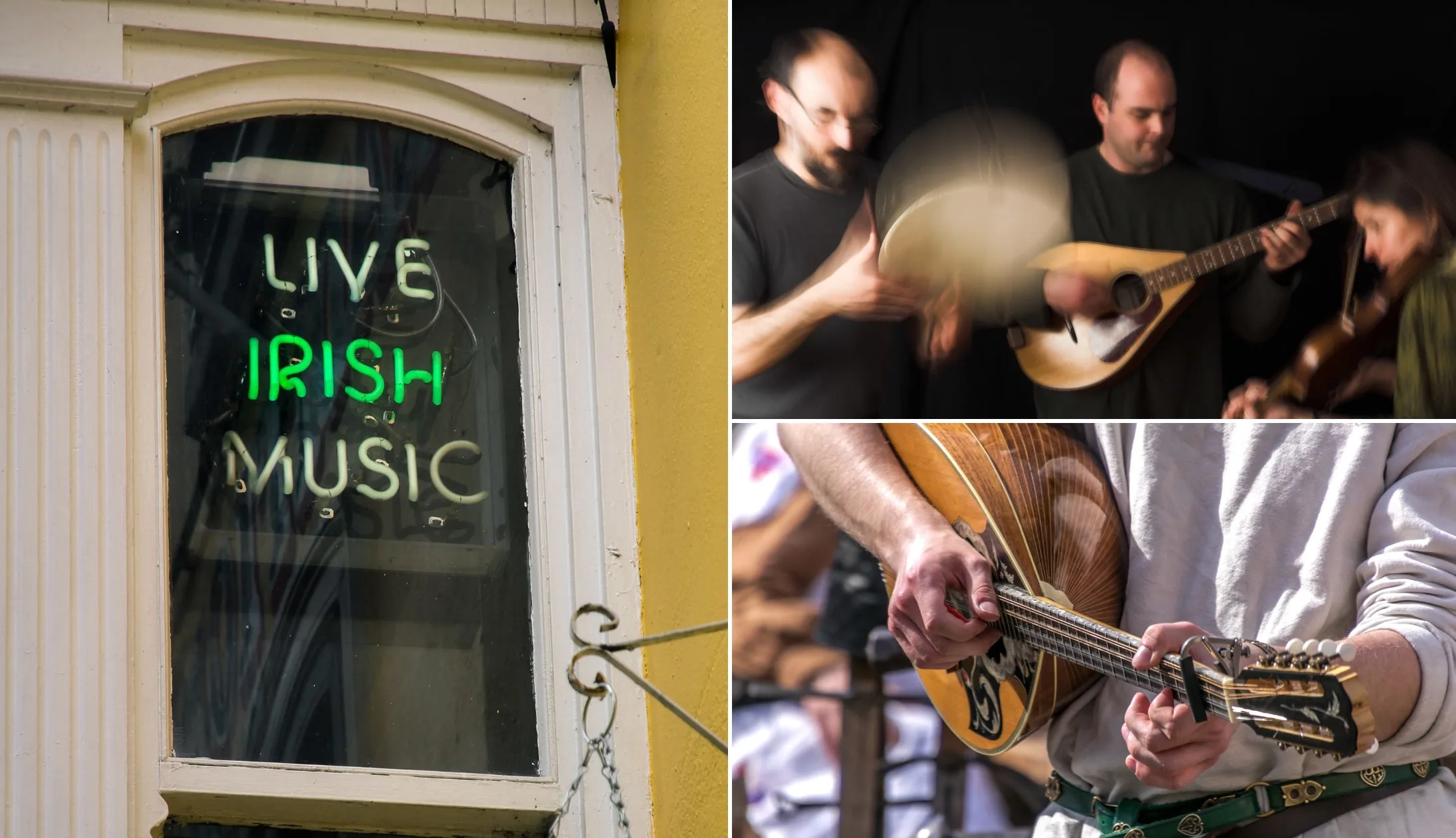
Photos via Shutterstock
Music is one of the most defining aspects of Irish culture, with traditional Irish folk music and its Irish instruments recognised worldwide.
Traditional Irish music has deep roots, with many believing it was first brought to the island by the Celts thousands of years ago.
Today, Irish music spans a vast spectrum—from age-old Irish rebel songs to modern pop from U2 and rock anthems from The Cranberries.
If you’ve read my guide to the best Irish bands, you’ll know that Ireland has produced countless talented musicians.
7. The Irish Language

Our native language is a cornerstone of Irish culture. Gaeilge (Irish) belongs to the Celtic language family and was once spoken across the entire island.
While English is now the dominant language, Irish was the primary tongue for most of recorded history and remains the first language in Gaeltacht regions—rural areas where Irish is spoken daily, with English as a second language.
These regions are mainly found in parts of Donegal, Galway, Kerry, and Cork, though smaller Gaeltachtaí exist elsewhere.
The earliest written form of Irish dates back to the 4th century AD, appearing in Ogham inscriptions carved into stone.
8. Food and drink

Irish food and drink go far beyond Guinness and potatoes. Farming has shaped Ireland for millennia, with the Céide Fields in Mayo—older than the Pyramids—offering proof of early agriculture.
Classic dishes include Irish stew, Dublin coddle, boxty, and colcannon, while today’s food scene is thriving with producers crafting everything from artisan cheeses to world-class whiskey.
Guinness has been brewed since 1759, Irish coffee was invented in Limerick in 1943, and Ireland’s oldest brewery (Smithwick’s) and oldest of the whiskey distilleries in Ireland (Bushmills) are found in Kilkenny and Antrim, respectively.
9. Pub Culture
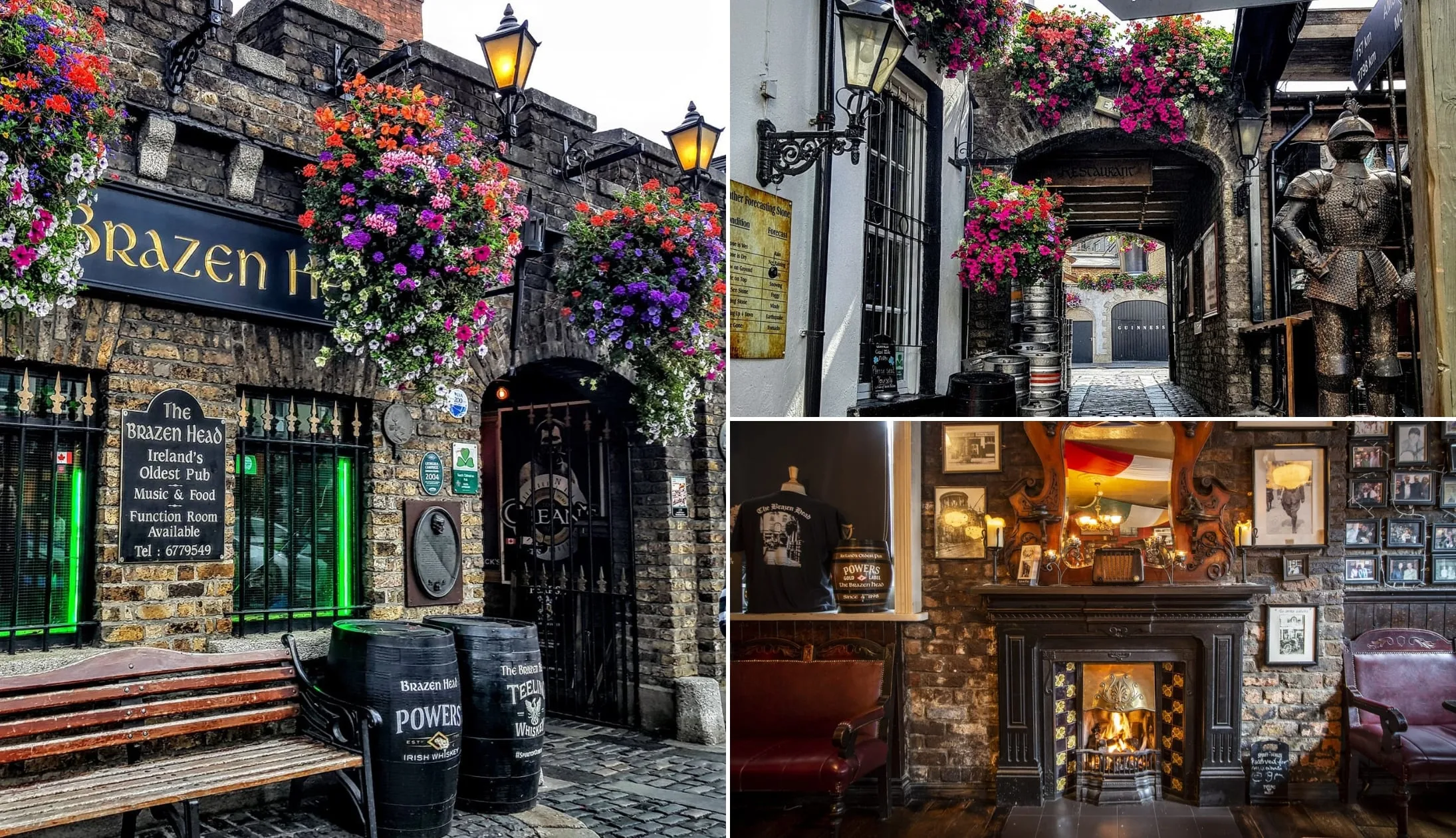
Photos via Shutterstock
Yes, drinking is part of Irish culture—no surprise there! But traditionally, Irish pub culture was about much more than just pints.
Pubs were (and still are) social hubs, much like cafés in other countries, where people gathered to catch up, unwind, and feel part of a community.
In rural parts of Ireland, this tradition endures. I once visited a pub in Ballyferriter where it was just me, the barman, and three aul lads—each sitting apart, nursing a single pint for hours.
The barman told me they lived alone, and this was their only human contact each day. See my guide to the best pubs in Ireland for more.
Explore beyond the culture in Ireland
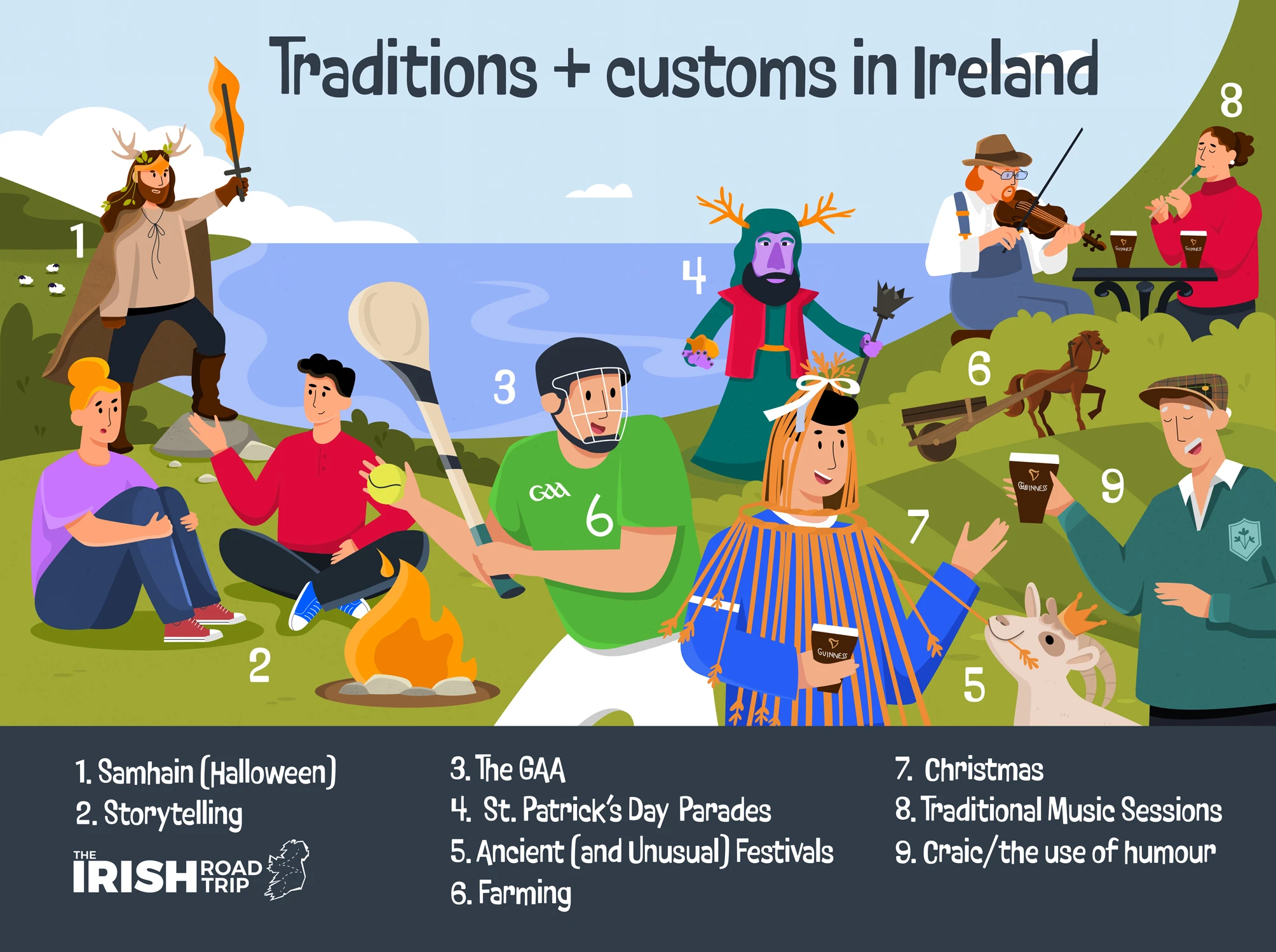
If you’re in search of what traditions Ireland follows – actually, let me correct that – if you’re in search of Irish traditions followed in Ireland, you need to take the vast majority of things that you read online with a pinch of salt.
There are a lot of ‘traditions’ listed online that really aren’t traditions that we follow in Ireland.
They might be Irish traditions in America that are followed by Irish Americans, but they aren’t traditions here.

